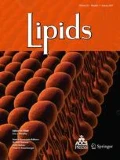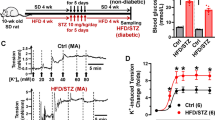Abstract
Intermittent electrical stimulation of the lateral hypothalamus of rats performed for 30 min to 6 hr, results in hyperlipidemia and endothelial cell damage of the aorta and coronary arteries. Hyperlipidemia is related to transient biliary obstruction elicited by hypothalamic stimulation and is characterized by elevation of the cholesterol, phospholipid, and triglyceride fractions. Endothelial cell damage is observed ultrastructurally as plasma membrane degeneration with detachment and the formation of large spaces (“vacuoles”). Thus, neural factors may be implicated in inducing conditions associated with early atherogenesis. Stimulation carried out for longer time intervals would be expected to produce more advanced lesions. However, the role of neural transmission per se (i.e., without hyperlipidemia) in producing arteriopathy is not clearly defined from these experiments. In rats, the lesser splanchnic nerve forms the major innervation of the abdominal aorta. In animals fed normal diets, chronic intermittent stimulation of this nerve (up to 3 weeks) resulted in advanced arteriosclerotic changes with intimal fibrosis and calcification. On histologic examination, lipid deposits appeared to be absent from these lesions. Animals stimulated for shorter periods of time exhibited earlier changes associated with atherogenesis, such as endothelial damage, elastic reduplication, and adherent microthrombi. Thus, direct neural transmission, especially if excessive, plays a role in producing arteriopathy. Hyperlipidemia, if persistent, could modify these lesions so that they would accumulate plasma lipids. Experiments to test this hypothesis are currently in progress.
Similar content being viewed by others
References
Friedman, M., and R.H. Rosenman, Ann. Clin. Res. 3:300 (1971).
Jenkins, C.D., N. Engl. J. Med. 294:987, 1033 (1976).
Syme, L.S., Mod. Concepts Cardiovasc. Dis. 44:17 (1975).
Zanchetti, A., (Ed.) “Neural and psychological Mechanisms in Cardiovascular Disease,” II Ponte, Milan, Italy, 1972.
Gutstein, W.H., J.N. LaTaillade, and L. Lewis, Circ. Res. 10:925 (1962).
Gutstein, W.H., L. Lewis, and D.J. Schneck, Vasc. Dis. 4:89 (1967).
Gutstein, W.H., F. Parl, and L.K. Bjornson, Ann. N.Y. Acad. Sci. 275:117 (1976).
Gutstein, W.H., D.J. Schneck, and H.D. Appleton, Metabolism 18:300 (1969).
Gutstein, W.H., D.J. Schneck, G. Farrell, and W. Long, Jr. Metabolism 19:230 (1970).
Gutstein, W.H., and G. Farrell, Proc. Soc. Exp. Biol. Med. 141:137 (1972).
Gutstein, W.H., A.F. D’Aguillo, F. Parl, and G. Kiu, Artery 1:385 (1975).
Gutstein, W.H., A. Lazzarini-Robertson, Jr., and J.N. La Taillade, Am. J. Pathol. 42:61 (1963).
Author information
Authors and Affiliations
About this article
Cite this article
Gutstein, W.H., Parl, F. Neural factors in experimental degenerative arteriopathy. Lipids 13, 380–382 (1978). https://doi.org/10.1007/BF02533736
Received:
Issue Date:
DOI: https://doi.org/10.1007/BF02533736




